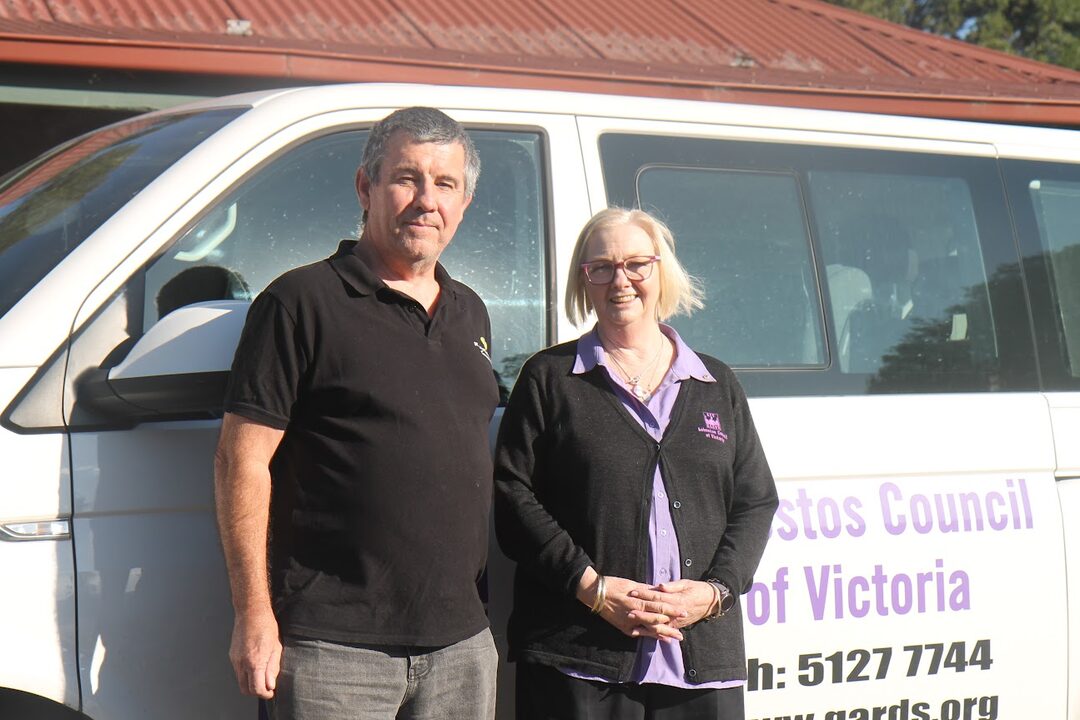By KATRINA BRANDON
WHAT was once a solution for many issues in the construction industry is now a significant health risk.
Last month, the Asbestos Council of Victoria held a support and awareness event in Moe for asbestos and silica.
The council’s chief executive, Vicki Hamilton brought in speakers to help run the discussion. Ms Hamilton works throughout Victoria, raising awareness of asbestos and silica health issues and directing people to where they can get support.
Ms Hamilton also occasionally works with medical students and apprentices to help them discuss the subject matter and overcome the mentality that “there is a safe level” of exposure.
“It’s all over Australia,” she told the group.
“When you tell me that an apprentice says that there is a safe level of exposure, that bothers me immensely. It is a silent killer. That’s the biggest thing people don’t realise. Just sanding it and breathing it in … it could be 10-20 years or 30 years, but they’ll end up dying from it.
“We can get them (apprentices) at 16, and I’ll say, hands up, who’s been exposed to asbestos in the room, and you may get a quarter of the room to put their hand up that already know. These apprentices range in age from 16 to 40, and so by the time we finish doing a nearly two-hour session on asbestos and silica, I say it again, hands up, who knows that they’ve been exposed to asbestos, and we’ll have three-quarters of the room with their hand up.”
Asbestos is a building material that was used in industrial and residential buildings between the 1940s and late 1980s. Before the health risks were known, asbestos products were widely used because they were durable, fire-resistant and had good insulation properties.
According to the Asbestos Council of Victoria website, Yallourn (built between the 1920s and 1950s) was known for its quality housing. At the time, asbestos was widely used in household and everyday products. To deal with the extreme heat generated in electricity production, the State Electricity Commission of Victoria used asbestos in a wet form for insulation around pipes in the power stations, known as lagging.
Former power industry worker Ray Harris worked in stations from 1956 to 1962 and at Hazelwood Power Station from 1962-1989. In a statement he made to law firm Slater & Gordon, he described these power stations’ extensive use of asbestos and asbestos-related products. He also described the lagging process and consequent dispersal of asbestos dust.
He said, “Asbestos exposure occurred during the construction phase of new power stations, when lagging was applied to boilers, turbines and ancillary equipment. Laggers were supplied with bags of dry asbestos, which were emptied into bins measuring approximately two metres square by one metre in depth. Water was added, and the product was mixed to form a paste. During this process, laggers were covered in dust and did not wear masks before or during the mixing process. Dust dispersal was quite significant.”
In 2003, Australia banned the use, importation and exportation of asbestos. However, the legacy of asbestos is still felt in the Latrobe Valley today, with former Latrobe Valley power industry workers contracting mesothelioma at seven times the state average, according to a 2003 study. According to documents obtained through Freedom of Information, 140,000 Latrobe Valley power station workers were exposed to asbestos between the 1920s and 1980s.
During the discussion session, Damian Murphy, operations manager of Mairin OHS&E Consulting, talked about his involvement in the asbestos topic.
Mr Murphy has spent 30 years in the asbestos testing industry. He told the group he considers himself one of the lucky ones, after being exposed to asbestos at a young age.
“I count myself as one of the lucky ones, because before I knew about asbestos, I knew that I was exposed,” he said.
“I remember as a child, my uncle was a builder, and he was building a bungalow at the back of our house. He had me cutting the cement sheet. When cutting the cement sheet with the electric saw, you’re standing around in clouds of asbestos-contaminated dust.”
According to Mr Murphy, asbestos exposure is not as uncommon as people unknowingly renovating their homes without testing or power washing their roofs.
In one case, Mr Murphy said that the area was contaminated from asbestos exposure after someone pressure-hosed a home, contaminating the house next door, their plants, soil and nature strip. The clean-up of the area cost upwards of $200,000.
“My impression of asbestos over the years and people’s awareness of it, it doesn’t seem to have changed a lot,” he said.
“We get the regular clients that are always aware of it, and we get the occasional new clients coming in. Now, I suppose it’s picked up a little bit in the last two years or since COVID, but there’s a lot of workers out there (who) don’t know enough about it, or just ignore the facts.”
Ms Hamilton mentioned that some people dispose of asbestos incorrectly, causing more issues.
Asbestos doesn’t break down over time like most materials. Mr Murphy said that people should call in removalists to dispose of it correctly and limit exposure.
Silica is found in sand, stone, concrete and mortar. It is also used as the primary filler for engineered stone. When workers cut, crush, drill, polish, saw or grind products that contain silica, tiny dust particles are generated that are small enough to lodge deep in the lungs and cause disease.











